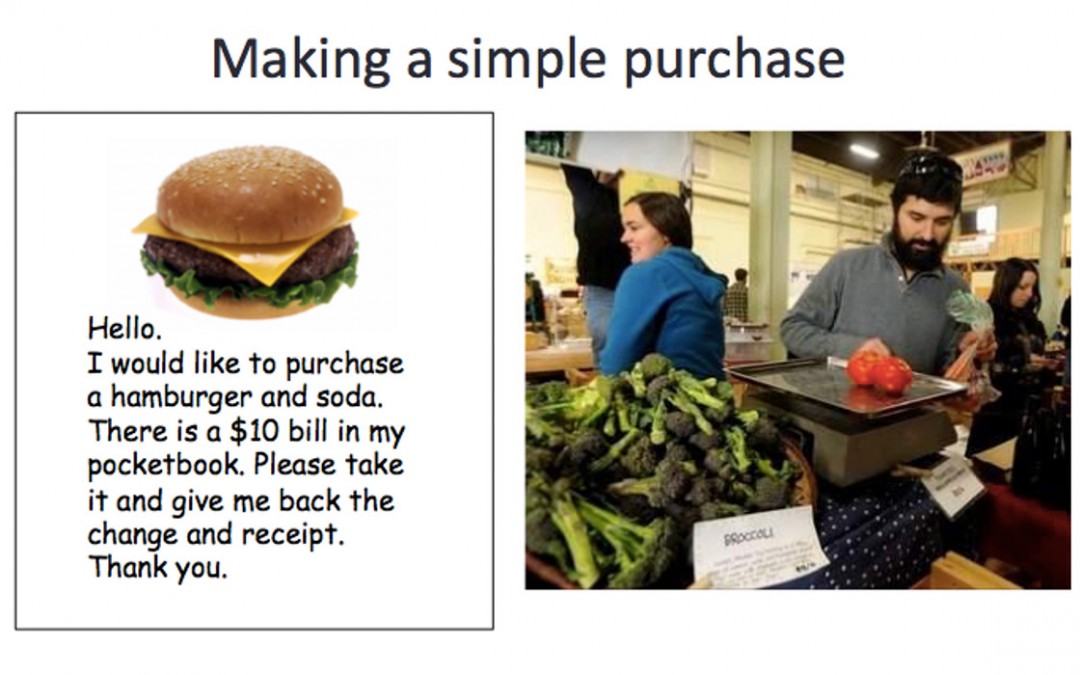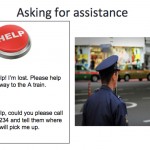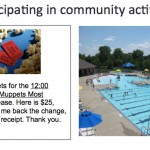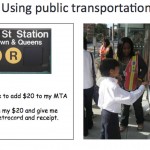Community request cards are small, portable cards that can be used in one’s community to access goods and services.
Download: Community Request Cards
Special Thanks to Jayde Hong, Kelly Maher, and Marie Safi
Background: Community request cards are small, portable cards that are used for a variety of interactions and requests in one’s daily life. Each card typically consists of a simple request or interaction paired with a corresponding image. They are intended to help individuals with complex communication needs to be more independent within their community.
Population: Individuals of all ages with communication disorders or cognitive difficulties.
- Independent use of community request cards requires ability to learn simple routine of presenting card in exchange for items or completing a task
- Individuals who require greater support can use cards with verbal or hand-over-hand assistance
Description: Community request cards can be used for a variety of interactions, including: making a simple purchase, using public transportation, participating in community activities, or asking for assistance, or expressing emotions.
How to make community request cards:
- Choose an activity that can be navigated with relatively simple language (e.g. Take the M60 bus from school to home.)
- Determine the messages the individual needs to communicate to complete this activity with greater independence.
- Write or type the requests on small cards using concrete, concise language.
- This will make interactions simple and efficient.
- Draw or include a picture which illustrates the request.
- Adding an image supports understanding by both the user, or community worker.
Examples:
Making a purchase: Hello. I would like to purchase a hamburger and soda. There is a $10 bill in my pocketbook. Please take it and give me back the change and receipt. Thank you.
Using public transportation: Hello. I would like to add $20 to my MTA Metrocard. Please take my $20 and give me back my Metrocard and receipt. Thank you.
Participating in community activities: Hi, two tickets for the 12:00 showing of Muppets Most Wanted, please. Here is $25, please give me back the change, tickets, and receipt. Thank you.
Asking for Assistance: Hi I need help, could you please call (212) 555-1234 and tell them where I am? They will pick me up.
Additional notes:
- Laminate the cards for repeated use.
- Multiple cards can be strung together.
- Consider ways to facilitate transactions using cards.
How to introduce community request cards:
- Start with an activity that has a quick, tangible result (e.g. buying a cup of coffee).
- Practice exchanging the card for the desired item, either through role play or in a real situation.
- Clinician or support worker should accompany individual to the location where the request typically takes place and model handing over the request card.
- Hand-over-hand support can be provided if necessary, with gradual reduction of support over time.
- Additional modifications can be made as needed, depending on the user’s communicative level (see below).
| Unintentional level |
Benefit from interacting with people in the community Support person can provide hand-over-hand assistance with presenting card |
| Intentional informal level |
Object or object symbol can be attached to the card Co-active assistance and modeling can be provided |
| Symbolic (basic) level |
Can use specific cards with a photograph, logo or line drawing for preferred activities Co-active assistance and modeling can be provided |
| Symbolic (established) level |
Use multiple cards for range of community activities May need initial support in learning to use cards |
Cost: Minimal cost for materials (paper, ink/markers, laminating)
Strengths:
- Simple and inexpensive to make
- Portable and easy to use
- No formal training required
- Suitable for individuals at a variety of ages and communicative levels
- Support greater independence and community participation
Weaknesses:
- Function is limited to simple transactions
- No flexibility—cards are static
- Issues with community support and perceptions
Empirical Evidence:
The Department of Human Services in Victoria, Australia, funded a survey study of users of non-electronic communication aids, including community request cards (West et al., 2012). Users and support workers who were interviewed generally reported:
- reduction of frustration
- increase in independence
- increased engagement with people or ability to develop relationships
Find other Contemporary Approaches to Intervention here!
Sources:
West, D., Johnson, H., Lyon, K., Iacono, T., & Trembath, D. Communication Resource Centre, Scope. (2012). Outcomes of the non-electronic communication aids scheme (NECAS) for adults with communication difficulties (Final Report)
Scope. (2010). Non-Electronic Communication Aid Scheme, Communication Resource Centre. Community Request Cards. Retrieved March 20, 2014
Price, E. (2014). Augmentative and Alternative Communication (AAC) Approaches [Brochure]. Sunyani, Ghana: Program in Speech Language Pathology, Teachers College, Columbia University.
Swipe through the gallery below for more examples!
- Community Request Card Help
- Community Request Card Participation
- Community Request Card Transportation






![[feed link]](/wp-content/plugins/rss-just-better/rss-cube.gif)